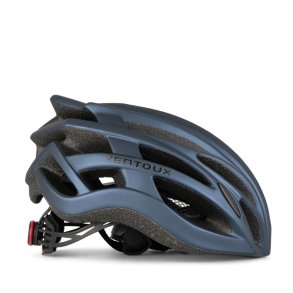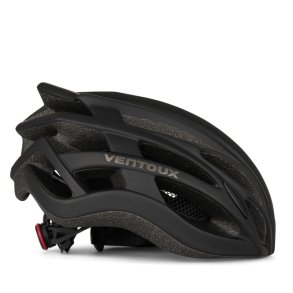Cycling helmets
In our design of AIR bicycle helmets, we have strived to optimize parameters that are of great importance for competition and training: Weight, ventilation, aerodynamics and fit.
And of course basic safety requirements must be met, i.e. the helmet must have the necessary safety approvals (minimum CE EN1078) and the construction must be of the In Mold type, which allows low weight and good ventilation at the same time as the protection is top notch. At the same time, it has been a requirement that the price must always be at a reasonable level where everyone can participate.
It is foolish not to use a bicycle helmet
The bicycle helmet is probably the most important piece of safety equipment for all cyclists, both professionals, amateurs and commuters. Of course, it primarily protects the head against damage in the event of a crash and collision. Head injuries are the most common type of injury cyclists are exposed to in traffic, and it is worth noting that the probability of serious head injuries, according to Sikker Trafik, is reduced by approx. 60% when wearing a helmet.
Although in Denmark we use bicycle helmets more than ever before, there are big differences. Up to the age of 12, up to 90% of children use a bicycle helmet, but when the teenage years are reached, it starts to become difficult: Among the 12-15 year olds, 53% use a helmet, while this applies to only 25% of the 16-25 year olds. Nor does it look too good among adult cyclists, where less than 40% put on a helmet before commuting or transport.
When it comes to helmet use among those who use the bike for training and sports, the story is fortunately completely different. In this group, over the past decade it has become an absolute no-go not to ride with a bicycle helmet, and today you are more easily surprised to meet an exercise cyclist without a bicycle helmet. In virtually all cycling clubs and for all exercise cycling races in Denmark, the use of a bicycle helmet is mandatory in order to be able to cycle along.
What is a good bike helmet?
There are many different types of bicycle helmets on the market, from the simple and cheap to the advanced and expensive models. And there is not necessarily a correlation between a high price and maximum security. You often pay considerably more for a "smart" and fashionable bicycle helmet than for basic safety.
The first thing you should check before buying a new bicycle helmet is whether it is approved according to the European standard EN 1078 or the American CPSC. These standards ensure that the helmet has undergone strict safety tests and meets the necessary requirements. You will typically find the markings printed on the outside of the helmet box and on the inside of the helmet.
The next thing you need to make sure is that the helmet fits your head well. A helmet does not protect well enough if it e.g. fits too loosely or does not cover the forehead sufficiently (approx. 2 cm from the eyebrows). Make sure you choose the right size by measuring the circumference of your head and preferably go for a helmet with a stepless adjustment system that can ensure a perfect fit. And remember that a bicycle helmet must sit horizontally on the head, and not point upwards (a la a Poul Nyrop helmet)!
In addition to approved safety and proper fit, a good bicycle helmet can also have a number of features that make it more comfortable to use
Helmet comfort is important
How comfortable is the bicycle helmet once it is on the head? It is certainly not unimportant that the helmet is comfortable to wear and does not bother and e.g. reduces attention to traffic and road conditions.
The most important thing here - in addition to a perfect fit - is that the helmet is relatively light. A heavy helmet will weigh down both neck and head, and especially on longer training rides it can be very annoying. We recommend that the helmet weighs a maximum of 300-350 grams and preferably less than that.
In addition, the bicycle helmet can have a number of other useful features. Eg. a good ventilation system in the form of many air channels (important on hot days), a good cushion system inside the helmet, the fly net and a visor that can be clicked on and off. Which features are important depends on both personal preferences and the type of cycling involved.
Ventoux AIR bicycle helmets meet the requirements
We have sold bicycle helmets for many years, both of our own design and other brands. Our latest addition to the range, the Ventoux AIR bicycle helmets, has been designed with the goal of creating a bicycle helmet that meets the most demanding cycling enthusiasts' requirements for both safety, comfort and lightness. Plus the helmet must look "right" in terms of style and colors. And on top of that at an affordable price. Check out the helmets above and look forward to trying!
* * * * * * *










